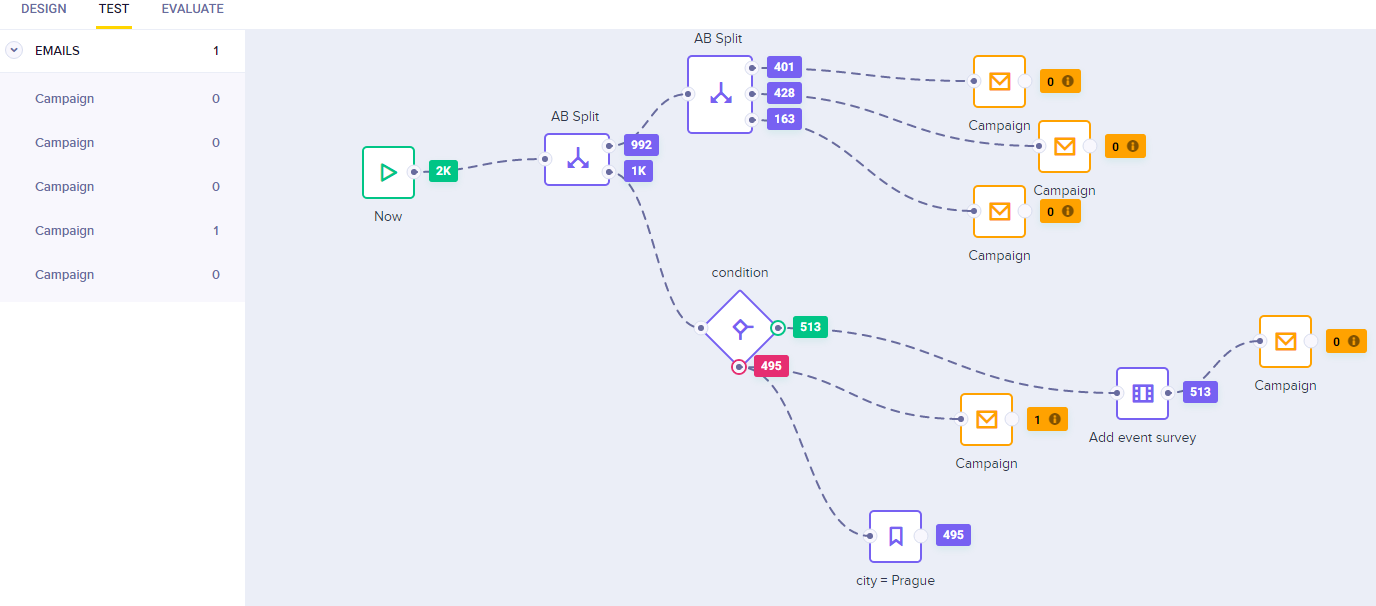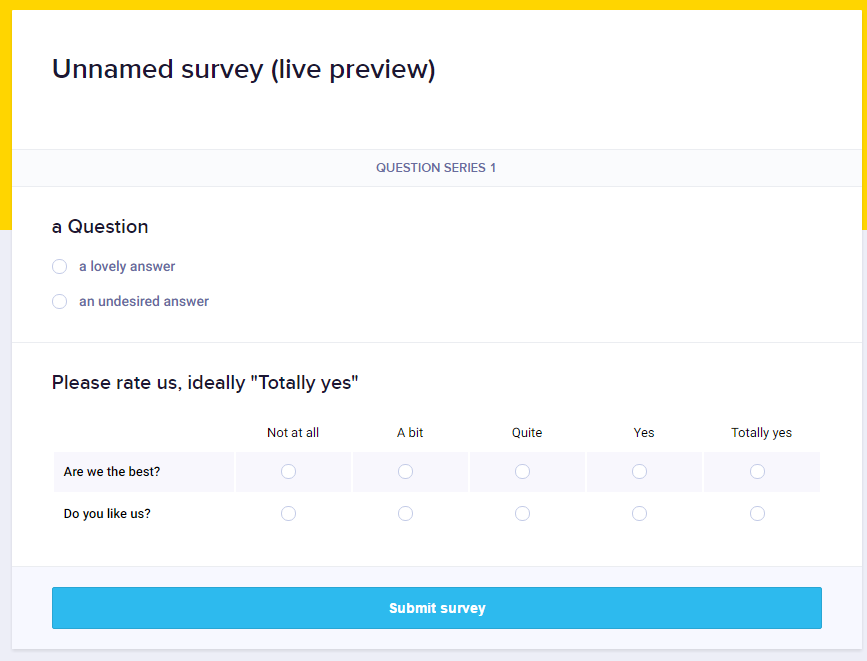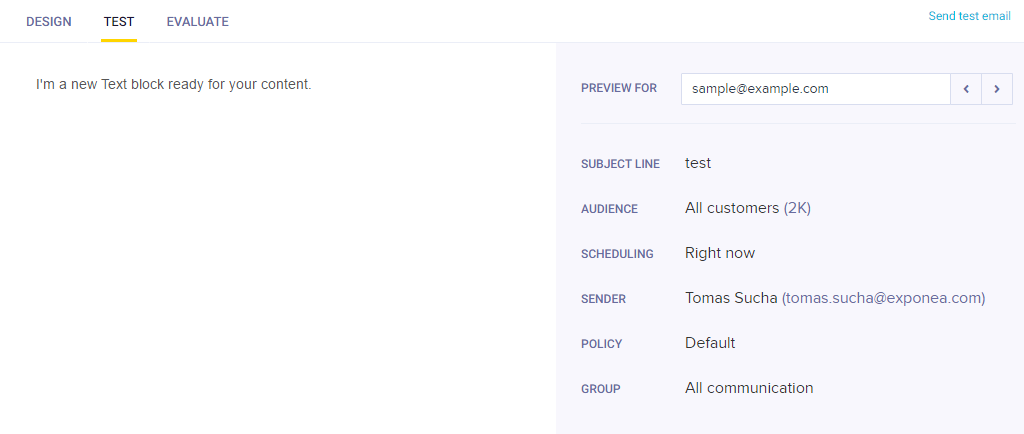Design > Test > Evaluate
Introduction
Campaigns (scenarios, web layers, surveys and email campaigns) in Bloomreach Engagement are features designed to target customer with marketing content. Each campaign consist of three important functionalities: Design, Test, Evaluate. These functionalities offer better understanding of the campaign execution process.

Design
In the design part, a campaign is created and designed. This part serves for editing and each campaign type provides its own unique functionalities. More about individual features is written in their respective guides.
Test
Test part works as a summary before running the campaign and enables the user to see the expected result of the campaign even before it is executed. This test will dry-run the campaign as if it was executed immediately, taking into consideration all policies, A/B splits, unsubscribes and other topics. However, this test is only an estimate. Actual situation can differ due to several reasons: some campaigns are not executed immediately and the user base can be different by the time campaign runs; each A/B split is random and executed in the time of its actual run.
Scenarios
In scenarios, a test panel will visualize the number of customers that will be affected via individual action nodes (to the left) and also how will the customers flow through individual nodes, visually identical to the scenario from the design part. Please note that this campaign test cannot be simulated with the On Event trigger.

Web layers
In the web layers, test panel provides a summary information on settings and visual design of the web layer. It also provides information on the number of customers that match the conditions set.

Surveys
Testing in surveys provides a final preview of the survey. This takes into consideration questions themselves, style and translation.

Email campaigns
Testing in the email campaigns allows to preview an email for a specific customer, and also allows to send a test email to a specific email address. Please note that when sending a test email, personalization is not taken into consideration. It also generally serves to review the settings and the size of the audience.

Evaluation
In the evaluation part, automatic dashboards are created to show the performance of the campaign.
Scenario
In the scenario results, the dashboard is created for one A/B split used and email nodes. If more A/B splits have been used in the scenario, the dashboard will not provide information about all of them. The dashboard will evaluate default metrics for each variant in the A/B split. For the evaluation, event set as a goal in the design part is taken into consideration, and only events within 24 hours of the campaign are counted. For the revenue, attribute total_price is taken from the selected event.
The default metrics are:
- Conversion uplift - Increase in conversion (percentage of buyers from the group size) between a variant and the control group
- Orders uplift - Increase in relative number of orders to the group size between a variant and the control group
- RPV uplift - Increase in revenue per visitor (sum of total_price from the whole group divided by the group size) between a variant and the control group
- Total uplift - Increase in revenue the variant has earned when compared to the control group (RPV uplift multiplied by variant size)
E-mail part of the result dashboard provides absolute and relative numbers for email deliveries, opens, clicks, conversions, bounces and complaints (marked as spam).
Web layers
In the web layers results tab, the default dashboard provides a timeline, one main funnel with conversion comparison, and three additional support funnels. Only goal events within 24 hours of the customer being reached with the web layer are taken into consideration. In the funnel, attribute total_price will be taken for the amount sum.
Surveys
In survey results, you can see the answer for each question as a report, depending on the type of the question. For example, single choice will appear as a pie chart, and text field as a table.
Email campaigns
Results in the email campaigns provide a funnel comprised of the following stages: enqueued -> delivered -> opened -> clicked.
Updated 5 months ago
